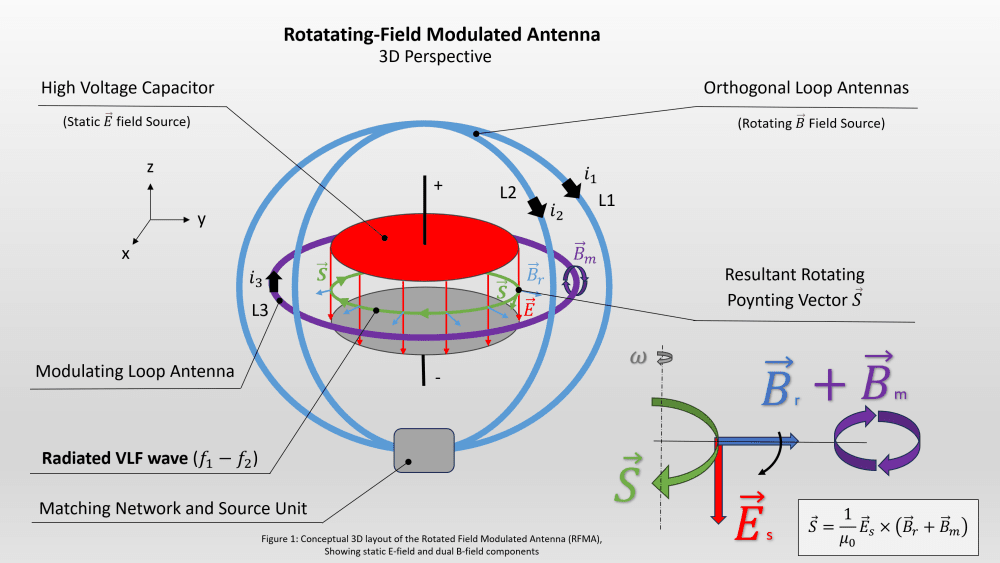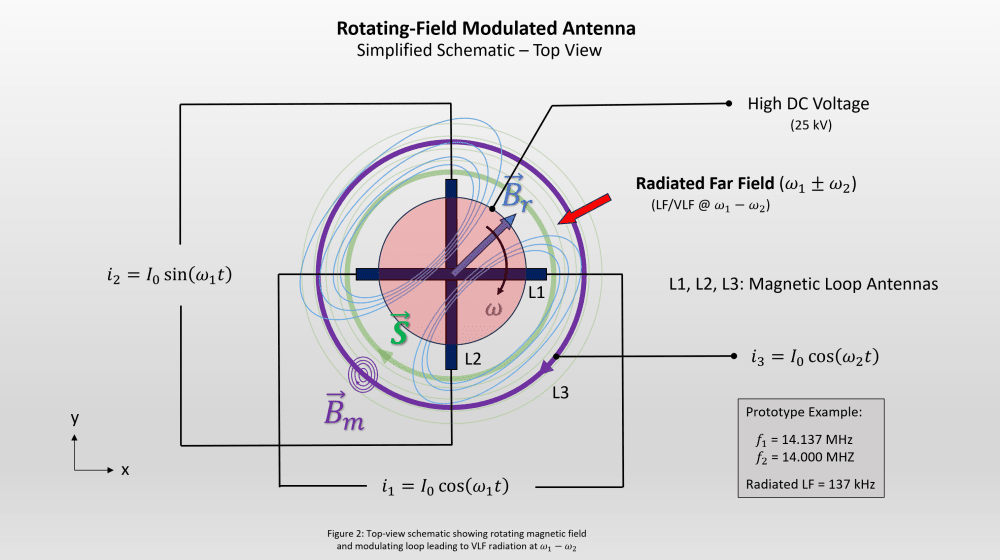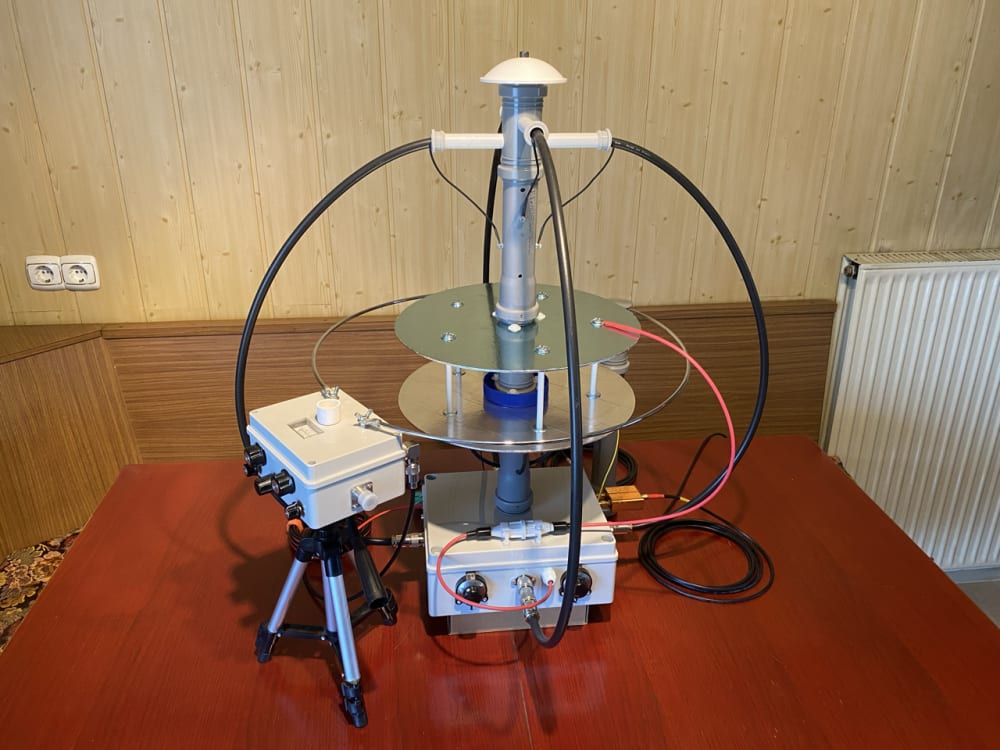The Rotating-Field Modulated Antenna (RFMA) introduces a novel method for achieving compact and efficient Very Low Frequency (VLF) communication by synthesizing and modulating circulating electromagnetic energy. This solution addresses a long-standing limitation in VLF systems, where conventional antennas must span hundreds to thousands of meters to achieve meaningful radiation efficiency. RFMA enables highly miniaturized VLF transmission platforms suited for submarines, UAVs, and other space- or stealth-constrained applications.
The system combines three interacting electromagnetic components:
- Rotating Magnetic Field: Two orthogonal loop antennas are driven with 90° phase-shifted RF signals (e.g., 14 MHz), generating a continuously rotating magnetic field in the horizontal plane.
- Static Electric Field: A high-voltage capacitor stack provides a strong vertical electric field, orthogonal to the rotating magnetic field.
- Resulting Poynting Vector (S): The cross-product of the E and B fields forms a circular, confined Poynting vector rotating around a horizontal plane, effectively circulating electromagnetic energy without radiating.
A third, smaller loop antenna is placed within this energy field and driven with a slightly offset RF frequency (e.g., 14.137 MHz). This intentional detuning introduces amplitude modulation of the circulating energy, creating intermodulation products. Of particular interest is the difference frequency component, which falls into the VLF range (e.g., 137 kHz or even less). This process “unlocks” the energy from the confined system and allows it to radiate into space at a wavelength much longer than the physical dimensions of the setup.
While loop antennas and Poynting vectors are well understood individually, RFMA is the first design to treat circulating electromagnetic energy as a modulatable medium for VLF generation. Unlike traditional magnetic loop transmitters, which suffer from extremely low far-field efficiency at VLF, RFMA achieves frequency down-conversion and field release via structured field interaction, enabling efficient radiation without physically large structures.
Applications:
- Submarine Communication: Deploy compact onboard antennas for stealthy VLF transmission.
- Stealth UAVs & Aircraft: Integrate into airframes for covert, long-range comms.
- Space Probes & Satellites: Provide low-frequency channels without deployable booms.
- Hardening Communication Systems: Localized energy storage reduces susceptibility to EMPs.
A prototype is under active development using off-the-shelf components (ham radio transceiver, high-voltage flyback, loop antennas). The system is designed for modular scaling and can be produced using standard PCB, copper tube, and composite materials. The concept is demonstrable at low power (<10 W), with straightforward scalability for higher output systems.
Market Potential:
RFMA directly addresses defense-sector needs for miniaturized, robust VLF solutions. Potential customers include naval forces, aerospace manufacturers, and space agencies. The system offers performance benefits without the cost, complexity, or visibility of current solutions, improving safety, efficiency, and deployment flexibility.
Like this entry?
-
About the Entrant
- Name:Matjaz Zibert
- Type of entry:individual
- Patent status:none









